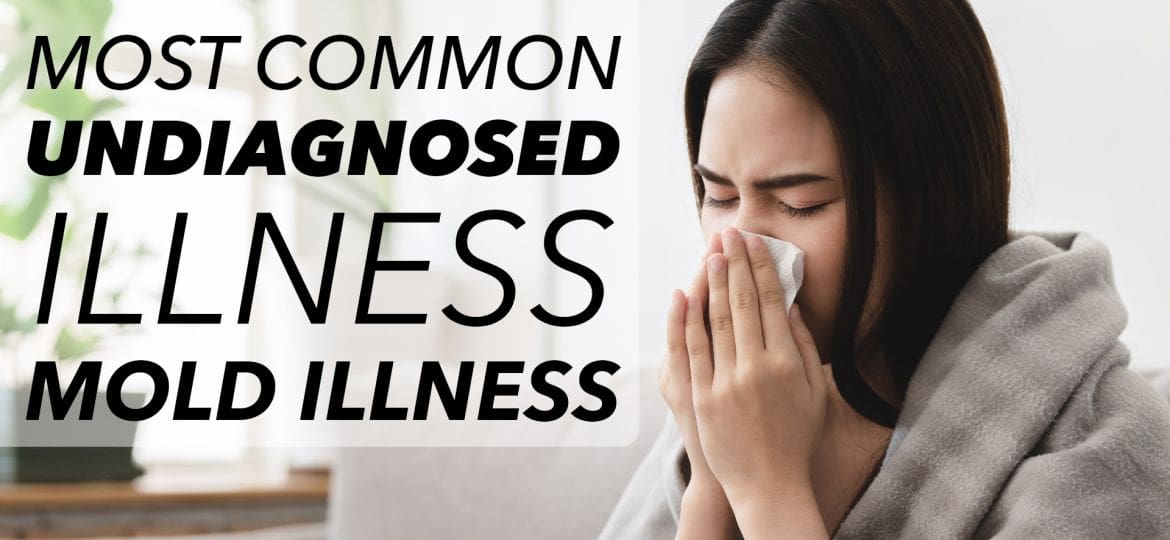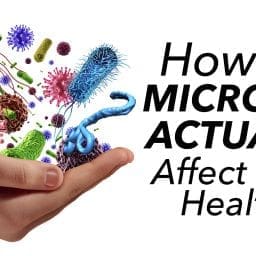
Unraveling the Complexity of Mold Illness: A Comprehensive Guide
Introduction to Mold Illness
Mold illness is a massive topic, there’s going to be a lot of information out there about protocols for mold. Be very careful with that. I am not going to lay out a mold protocol. That’s doing you a disservice. Mold, just like lyme disease is incredibly complex. For instance, you could use the right tools at the wrong time or dose.
There’s so much to it. There is no such thing as a mold protocol, you have to work with a clinician to solve mold illness. Work with a clinician who can understand your body, do the right functional tests, understand what you lack, your nervous system, and if you have mental health issues or sleep problems.
There can be so much going on. You might have to do months and months of gut repair before you even tackle the mold or work on a liver detox first for example. There are so many pieces to it, I want you to be informed.
I think it’s really important that we talk more about this topic, it’s way underdiagnosed, in fact in the conventional world very few doctors will even recognize toxic mold illness.
Common Symptoms of Mold Illness
Let’s get into some of the common symptoms. That by the way can often mask a lot of autoimmune diseases. So some common symptoms include brain fog, fatigue, moodiness, intense PMS symptoms, hormonal imbalances, and then we’ve got an actual clinical sign which would be yeast infections.
Commonly when we hear yeast infection we automatically think vaginal but if you’ve got itchy ears that you need to scratch all the time, that’s pretty likely a mold or fungal infection.
The ear canal skin folds, so if you ever notice any kind of weird rash or a white coating, this applies to any area the skin folds like below the breast for example. Toes are a very common place as well because we lose so much moisture through our feet every day and your shoes are trapping that moisture in there.
Another symptom is getting random rashes throughout the body. If you just get a patch here and a patch there and it’s random not like a psoriasis or eczema. These random kinds of patches get worse with stress could be also a sign of a yeast or fungal infection.
Another big one is chronic sinusitis, the sinuses have a dip in them, and they can hold pockets of fluid in there. Fungi and yeasts can get in there very easily, we breathe them in all the time. We breathe them in and they settle in there, and then all of a sudden we have got a colony. All of a sudden after a little while we’ve got biofilm and infections. Prescription medications are not that effective against biofilm. So chronic sinusitis feels like you get a cold and it just really never goes away or we may wake up in the morning and we’re all filled up. We may you know eat a certain food and it causes us to flare up, we’re looking at possibly some fungal issues.
Next, UTI, aka urinary tract infections. A lot of people, especially women, I’ve noticed have a UTI but it’s just they don’t have clinical UTI that would typically be diagnosed. I see patients that have had a UTI and they say “Oh I’ve had you know maybe one or two in the last year”.
Well, that usually means you’ve had 30 or 40 subclinical infections that you may not notice.
So those are some of the symptoms you might associate with mold illness and there’s more but that’s just a handful to get you started.
Causes of Mold Illness
As a functional medicine practitioner, it is important to investigate and analyze a patient’s history to determine the possible sources of mold exposure. We cannot simply rely on the patient’s initial visit to determine what has been going on with them. Instead, we need to be like CSI and gather clues to build a complete picture of the issue. We are not looking to blame anyone, but rather to find the cause of the problem.
In many cases, mold is the root cause of several symptoms, including brain fog, fatigue, and respiratory issues, and we must identify the source of the mold. Mold colonies are often found in damp areas, and they can produce mycotoxins, which can cause a range of symptoms. These toxins are the result of mold growth and are present in toxic mold.
Mold is everywhere, even in the cleanest environments. It is ubiquitous, and we can’t avoid it altogether. However, we can limit the number of spores found in the air and on surfaces. This way, we can reduce the load on the body, which can help the healing process.
Mold exposure can occur in various ways. For instance, if you grew up in an apartment with a leaky faucet or basement, you could have been exposed to mold spores for an extended period. The mold in your apartment would not remain confined to a single spot but would spread throughout the environment, making it difficult to avoid. It can start in one tiny patch in the basement and end up in large colonies in the attic.
Mold can combine with other bacteria, such as dust mites, even in a clean house. Dust can accumulate under appliances like a fridge, and it’s unlikely that you clean under there every week. If mold and dust combine, it can create toxic byproducts. Even if we move to a clean and well-maintained house, we may still have a mold colony that we acquired during our childhood. This mold colony can haunt us for our entire life and worsen with stress. Even if we don’t have a large exposure to mold spores, we can still be exposed to small amounts through leftover food. Mold is everywhere, and it’s impossible to avoid it completely. That’s why maintaining a healthy terrain in our body is crucial.
Let’s say we drink a lot of conventional coffee that’s not mycotoxin-free. Every cup of that coffee will have a whole bunch of mold spores that will enter our bodies. The same goes for tea and anything that’s kind of dried out, especially in South America where it’s very humid. When they dry stuff out in the sun and then close it in, there’s still going to be a lot of moisture left, which will lead to mold growth. I even have a personal experience with this. A few years ago, I didn’t use mycotoxin-free coffee for my French press. I left it sitting for a week, and when I went to clean it out, I found a huge colony of slime mold, which is a type of biofilm mold that wrapped around the plunger part of the French press. It was pretty gross and hard to remove. Imagine if we were colonized with a slime mold. This is why we need to get some mycotoxin-free or mold-free coffee because it’s not okay for it to be in our bodies.
So some ways you can get mold exposure are leftover food, extreme stress, and unstable mold colonies. Even if you don’t see mold colonies on your food, it might still be growing on it. If you take that food to a lab after three days, you might find beings of mold spores starting to release in the food. So, you should be careful with leftovers. It is a case-by-case basis, some people might tolerate it, while others may not. Extreme stress, such as going through a divorce, losing a loved one, or losing your job, can change the pH of your body and how your nervous system works. This can result in your immune system being down for the count, which can cause mold colonies that have been stable for years or decades to become unstable.
Gut disfunction is another big cause. Mold can be recycled and kept at low levels when there are good microbes present in the body. These microbes can consume the mold as fuel and eliminate it. However, if we have dysbiosis of the bowel, meaning it’s not functioning properly, it can’t filter out the mold effectively. Therefore, it’s important to maintain a healthy gut to keep the spore count in our body low and prevent mold-related health issues.”
A clogged liver is a huge problem too. A clogged liver that’s not working, especially phases one and two, the liver does so much stuff. It filters sediment out of our food and our blood then has two phases of detox which it does chemically.
If those are not working those other two phases you are not going to be able to get mold out of your body at all or anything else for that matter.
Metabolic pitfalls are common in mold toxin illness, which affects the function of mitochondria in every cell of your body. Think of each cell as an apartment in a high-rise building, with a special machine called a mitochondrion. Without good mitochondrial function, the body cannot heal or function properly. One of the major causes of mold illness is the hijacking of the NAD pathway by mold. NAD is a crucial compound used by mitochondria to produce energy, and antioxidants, and help the immune system fight off infections. Minerals also play a significant role in mitochondrial function, and low levels of trace minerals can lead to communication issues between cells and pH imbalances. Methylation is another critical process that can be hijacked by mold, affecting the body’s ability to produce essential proteins.
Liver function is another metabolic pitfall in mold toxicity, with Phase 1 and Phase 2 of liver detoxification being compromised. It is also essential to check the cellular pH level, which is not the same as the blood pH. The cellular pH must be stable to prevent the body from becoming too acidic or too alkaline. The perfect pH is about 6.5, and any deviation can lead to a dysfunctional body, low oxygen levels, waste accumulation, microbial growth, and chronic illness.
Conclusion
Mold toxicity is a complex issue that requires a personalized approach, and a clinician who is knowledgeable about mold, infectious diseases, and functional medicine. A clinician can help determine the best treatment for your unique situation, including the right nutrients, medications, lifestyle changes, and mindset. If you’re struggling with mold illness schedule a free Zoom call to discuss your situation.
Be well,
Dr. Jason
Board-certified naturopathic & functional medicine doctor
















